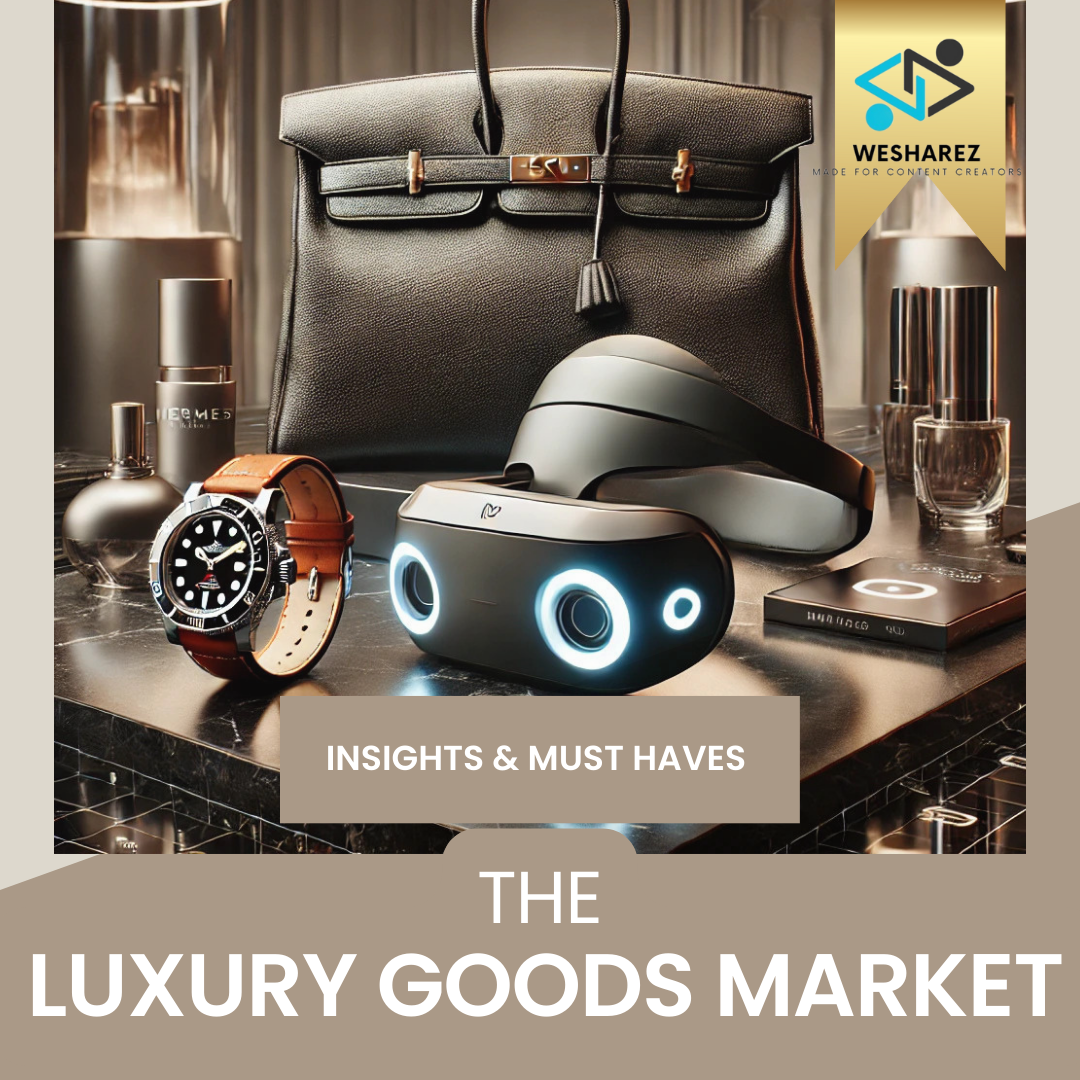
Introduction
The allure of luxury goods continues to captivate the global market, and 2025 is no exception. From designer fashion to cutting-edge tech gadgets, the luxury industry remains a benchmark for quality, exclusivity, and innovation. This article dives deep into the world of luxury goods, exploring market trends, popular items, and the pros and cons of indulging in these high-end products.
Global Luxury Market Trends in 2025
The global luxury market has seen robust growth, projected to reach $350 billion by the end of 2025, according to a report by Bain & Company. This growth is fueled by the rising affluence in emerging markets, particularly in Asia, where the younger generation drives demand for exclusive, experiential, and sustainable luxury products.
Key Statistics:
Asia: Accounts for 40% of global luxury sales.
Online Sales: Expected to constitute 30% of total luxury sales, highlighting the increasing importance of e-commerce.
Sustainability: Over 60% of affluent millennials and Gen Z consumers prefer luxury brands committed to eco-friendly practices.
Trends Shaping the Industry:
Sustainable Luxury: Brands like Gucci and Stella McCartney are leading the charge with eco-conscious collections.
Digital Integration: Virtual showrooms and augmented reality shopping experiences are redefining how consumers interact with luxury brands.
Personalization: Tailor-made products and services are becoming the norm, as customers seek unique, one-of-a-kind experiences.
Popular Luxury Goods in 2025
Luxury items span various categories, each offering something unique. Here are some of the most sought-after goods:
Fashion
Hermès Birkin Bags: Timeless pieces that double as investments. Learn more at Hermès.
Louis Vuitton Men’s Jackets: Blending style and functionality with impeccable craftsmanship. Explore at Louis Vuitton.
Balenciaga Sneakers: A mix of streetwear influence and luxury appeal. Check out Balenciaga.
Watches
Rolex Submariner: A classic dive watch that retains its value. Discover more at Rolex.
Patek Philippe Nautilus: A symbol of status and elegance. Explore the collection at Patek Philippe.
Omega Speedmaster: A heritage piece with modern upgrades. Visit Omega.
Tech
Apple Vision Pro: A game-changing luxury AR headset. Learn more at Apple.
Bang & Olufsen Beosound Theatre: Combining exceptional sound with sleek design. Discover at Bang & Olufsen.
Vertu Smartphones: Ultra-luxury phones made with rare materials. Visit Vertu.
The Pros and Cons of Owning Luxury Goods
Luxury goods are more than just products; they represent status, craftsmanship, and identity. However, they also come with challenges.
Pros
Quality and Durability: Luxury goods often last longer due to superior materials and craftsmanship.
Status Symbol: Owning luxury items signals success and taste.
Investment Potential: Certain luxury items, such as watches and handbags, can appreciate in value over time.
Cons
High Cost: The upfront investment can be significant.
Maintenance: Luxury items often require specialized care.
Resale Uncertainty: Not all items retain their value, especially trend-based products.
Explore Real-World Luxury Ads
For a glimpse into the latest luxury offerings, check out these real-world ads powered by Google’s AdX platform:
Chanel’s Iconic Handbags
Rolex’s Timeless Collection
Apple Vision Pro AR Headset
These campaigns highlight the innovation and prestige synonymous with the luxury sector.
Conclusion
Luxury goods in 2025 are more than just possessions; they’re experiences, investments, and symbols of a lifestyle. As the market evolves, staying informed about trends, popular items, and the nuances of ownership ensures you make the most of your luxury investments. Whether you’re a seasoned collector or a newcomer to the world of luxury, the year ahead promises exciting opportunities to indulge in the finer things in life
